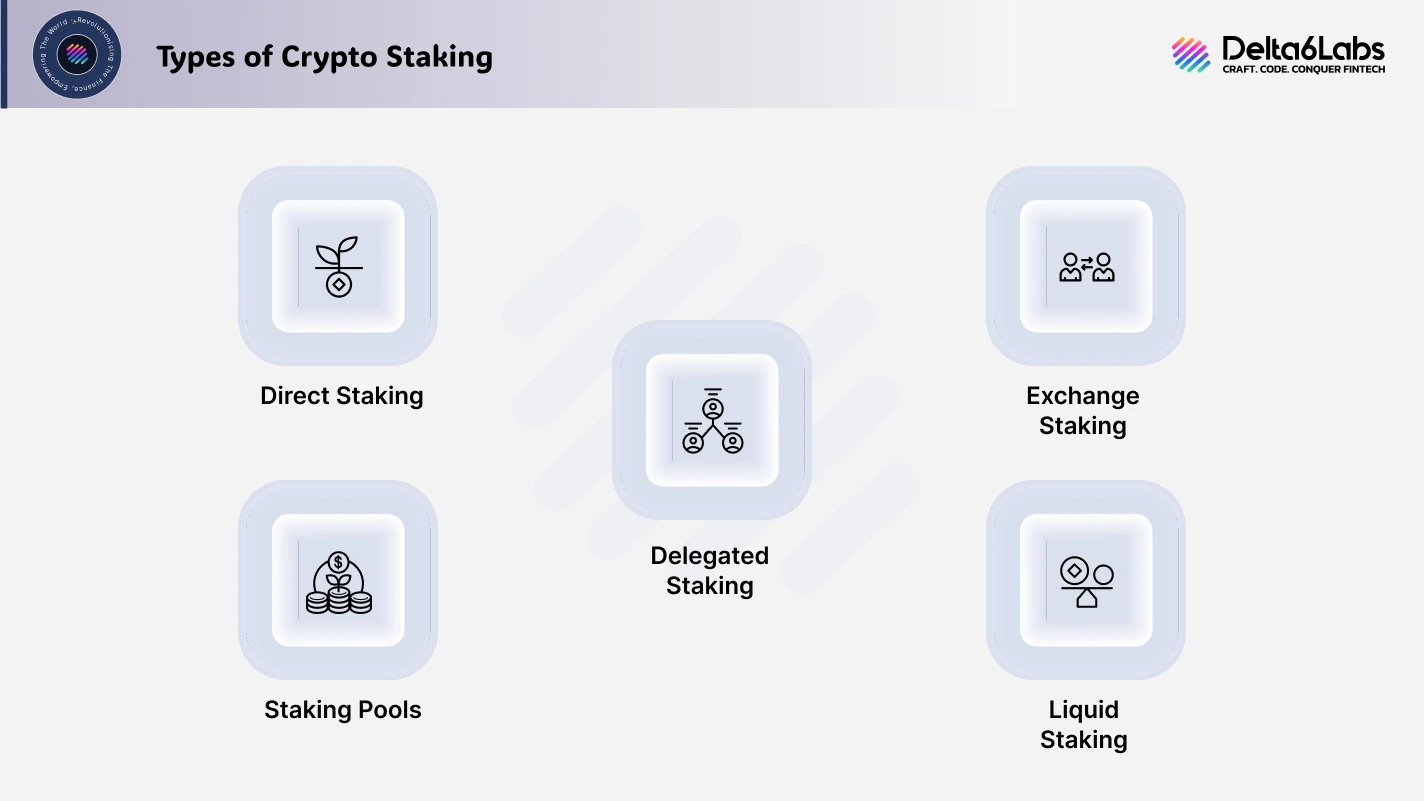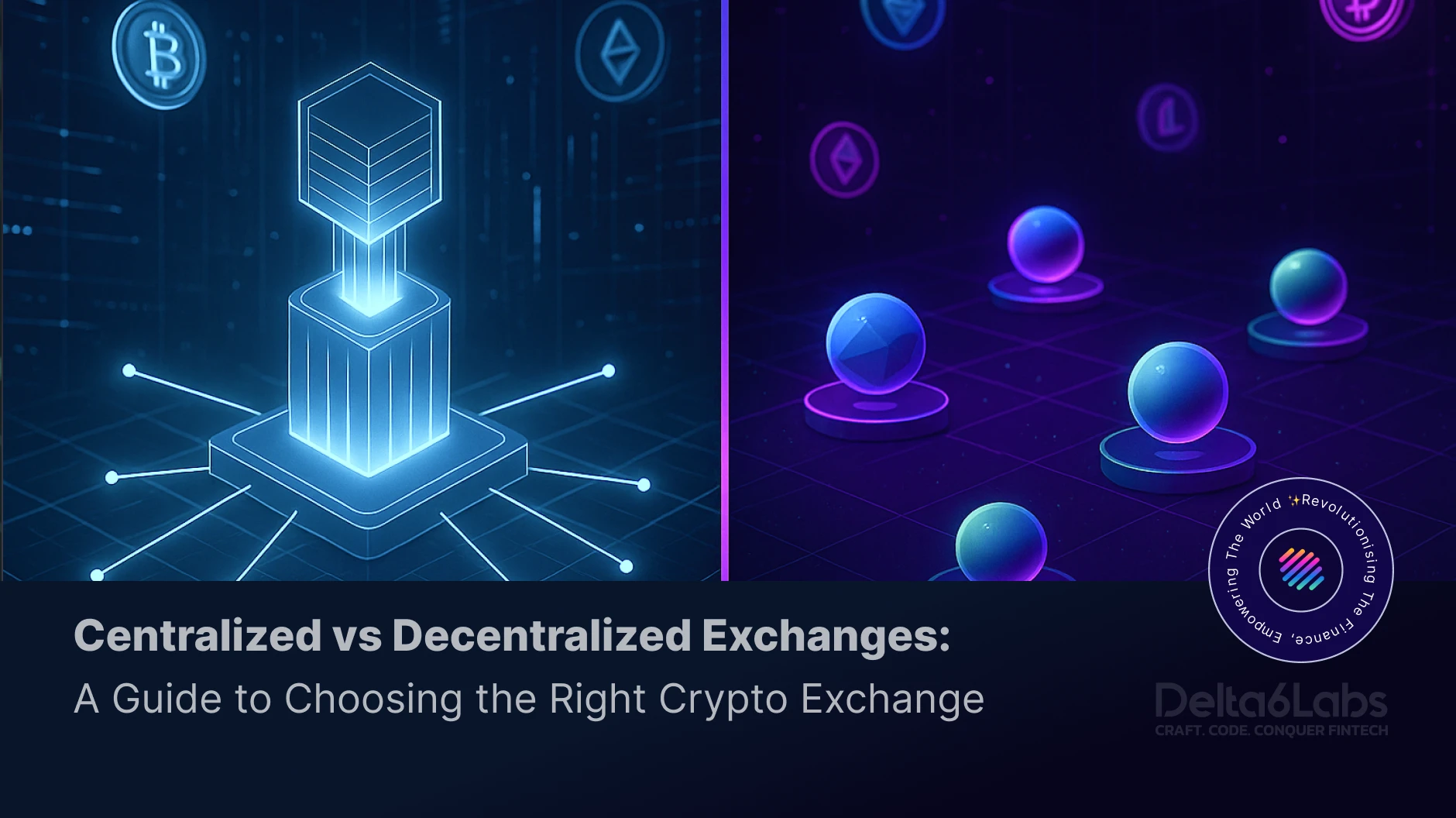What Does Staking Crypto Mean? How Can It Benefit Users in 2025?
Table of Contents
Staking is another method that is rising in popularity as a reliable source of income generation. We can validate the popularity of staking by the fact that the market value of staked Ethereum alone is more than $80 billion. According to the State of Stake Report, the global staking market cap has surged to an impressive $187.9 billion and will rise rapidly in 2025. This blog will explain what staking is, how it works, and the cryptocurrencies worth staking in 2025.
What is Staking Crypto?
Staking is a process that allows users to earn rewards by validating the addition of new blocks in blockchain networks using the proof-of-stake (PoS) consensus mechanism without selling their crypto assets. PoS is the primary consensus mechanism used in staking, but some blockchain networks also use the Delegated Proof-of-Stake mechanism.
Let’s take an example to understand crypto staking better. If a person is staking 1000 APTs (currently equal to $4620) for a year, and the annual percentage yield of Aptos is 7.0%, then the person will have 70 additional APTs (equal to $323) by the end of the year. However, cryptocurrencies are highly volatile, so the price of Apt can go up and down, resulting in profit or loss.
Types of Crypto Staking
There are various types of staking through which users can earn rewards. In this section, we will explain five major types of staking, each having its own benefits.
Direct Staking
Direct Staking is a method that allows people to lock their cryptocurrencies in secured crypto wallets to support the functioning of a blockchain. Participants stake their cryptocurrencies to validate transactions and earn rewards, mainly in the form of additional cryptocurrency.
Staking Pools
A staking pool consists of individuals willing to validate transactions on a blockchain network, where their individual amounts are insufficient for staking, by forming a single staking node. Additionally, the rewards are distributed proportionally among participants who are part of the staking node. One of the biggest benefits of staking pools is that the pool operators are mainly responsible for the pool management, and that reduces the risks for individual participants.
Delegated Staking
Delegated Staking is just an extension of staking. People can outsource validators if they lack proper instruments, knowledge, or validation mechanisms. Participants transfer their staking rights to others and let them do the hard work while they sit back and earn some percentage of the rewards.
Exchange Staking
Various crypto exchanges allow users to stake their cryptocurrencies directly through the platform. The exchange is responsible for everything, including cryptocurrencies worth staking, mechanisms, and other technicalities. They provide proportionate rewards to the users after cutting some platform fees. Delta6Labs has developed a few scalable crypto exchanges that facilitate users with the staking feature.
Liquid Staking
Liquid Staking allows participants to stake directly on a Proof-of-Stake network with a liquid staking token (LST) minted by the protocol. In liquid staking, token holders stake their tokens and receive a receipt token, known as a liquid staking token (LST), to verify their ownership of the staked tokens.

How does Crypto Staking work?
Here is the step-by-step process of crypto staking:
- Not all cryptocurrencies allow staking because they may have been minted on a blockchain platform that doesn’t use the PoS or similar consensus mechanism. So, the first step is to choose a cryptocurrency that supports staking.
- After selecting an appropriate cryptocurrency for staking, the next step is to acquire/purchase that cryptocurrency.
- The next step in crypto staking is to select a secured staking platform. Different exchanges facilitate several types of staking (mentioned above), so users can choose the kind of staking that suits their requirements.
- After selecting a secured platform, crypto staking can be done directly from the wallet. The exchange and users pre-determined the lock-up period, so the cryptocurrencies are locked to the blockchain network after staking.
- The yield may come after some time in the form of cryptocurrencies. However, it’s not always necessary that the yield will come at a specific time or will come at all.
What is the Proof-of-Stake Consensus Mechanism?
The Proof of stake mechanism works on the principle of staking. All the nodes in the network put a certain number of cryptocurrencies as collateral to become a validator of the new block, which can fetch them rewards later. Due to this staking policy of the PoS mechanism, fewer nodes participate to become validators. Those who wish to become a validator puts their crypto coins at stake.
This mechanism consumes comparatively less electricity than the PoW consensus mechanism because, in the PoW mechanism, the nodes have to solve a mathematical puzzle that consumes high energy. However, no such process is needed in the case of the PoS mechanism. Ethereum (Casper update), Cosmos, and Solana are famous blockchains using the PoS mechanism.
Benefits of Crypto Staking
There are numerous benefits of crypto staking, such as:
Yield Rewards
The primary benefit of crypto staking is that it empowers participants and yields passive income without taking the risk of cryptocurrency trading. Users lock their cryptocurrencies worth staking and wait for the passive income that may be generated after a certain amount of time.
Contribution to Blockchain Stability
Users who put their cryptocurrencies for staking contribute to the security of the blockchain network. When a user locks a cryptocurrency, its prices generally rise because the number of tokens is reduced in circulation. Governance rights are also provided to users staking their cryptocurrencies so that they can make decisions and participate in the network’s overall stability.
Compounding Opportunities
Staking provides tremendous opportunities for users to increase their income multifold and boost their financial condition. Every blockchain network that allows staking has a different APY (Annual Percentage Yield), resulting in different yields and exponential growth.
Better Accessibility
In the PoW consensus mechanism, expensive GPUs with high computational powers are required to participate in crypto mining. However, such machinery is not required in the PoS mechanisms that allow staking. Users with less technical knowledge or GPUs can also participate in staking.
Energy Efficient
The Proof-of-Stake consensus mechanism consumes less energy than the Proof-of-Work consensus mechanism, which is high energy-consuming. In the PoW mechanism, high-energy-consuming GPUs are required to solve complex mathematical problems. However, Staking is an energy-efficient process because it only works with the PoS or similar consensus mechanisms.

Risks of Crypto Staking
Here are a few risks associated with crypto staking:
Penalties
Some blockchains are protected with slashing mechanisms, which can penalize validators for misbehavior during validation. This will further result in the loss of staked tokens. Also, if you have transferred your validation rights to another person and they failed to perform, it can lead to the loss of staked tokens.
Lock-up Periods
Blockchain networks sign contracts with users regarding the token lock-up period, during which the user cannot sell or withdraw the staked tokens. If users need those tokens in case of an emergency, they cannot use them. This is a big challenge related to staking.
Regulatory Risks
The laws and regulations surrounding cryptocurrencies are always changing and are still in transformation mode. These adjustments can impact staking activities and the value of your staked crypto assets.
Market Inflation Risk
If the number of users receiving staking rewards reaches a certain level, it could lead to inflation in the prices of crypto tokens, which can further reduce the value of staked tokens.
Cryptocurrencies Worth Staking in 2025
Here are some cryptocurrencies worth staking this year:
Solana
Solana is an energy-efficient and less-expensive blockchain platform designed to power decentralized applications (dApps) worldwide. The primary utility token of the Solana blockchain is SOL.
SOL token holders can earn rewards and help secure the network by staking tokens. They can also stake by delegating their tokens to validators who process transactions and run the network. Currently, the staking market cap of SOL is $43.5 billion, and users have staked 64% of the total SOL coins. The APY of SOL is 5.9%, and the total number of staked SOL is 332.2 M.
Cardano
Cardano is an innovative, third-generation, Proof-of-Stake, and scalable public blockchain platform that facilitates transactions using the ADA cryptocurrency. It also supports smart contracts and the creation of dApps. ADA holders can earn rewards in two ways: by delegating their stake to a stake pool run by someone else or running their own stake pool.
The staking market cap of Cardano’s token ADA is currently $13.0B, and 60% of the total ADA has been staked. ADA’s annual percentage yield (APY) is 1.69%, and the total number of tokens staked is 21.2 B.
Avalanche
Avalanche is a layer one, decentralized, open-sourced blockchain network designed to power secure and scalable smart contracts. Unlike other platforms, staked tokens on Avalanche are never at risk of being slashed. Avalanche claims to have the lightest hardware requirements of any blockchain platform. The utility token of the Avalanche blockchain is AVAX.
AVAX holders are encouraged to stake their tokens to help secure the Avalanche network while earning rewards. By running an Avalanche node and staking AVAX, users can earn AVAX tokens. AVAX has a staking market cap of $4.0 billion; the total number of AVAX staked is 218.6 million. AVAX offers an annual percentage yield (APY) of 4.47%, and the percentage of AVAX staked is 53%.
Aptos
Aptos is an independent Layer 1 Proof-of-Stake (PoS) blockchain platform that emphasizes safety and scalability to foster growth within a decentralized network and developer ecosystem. It is regarded as one of the safest and most scalable blockchain networks in the DeFi community. APT is the utility token of the Aptos blockchain network. Aptos has a market cap of $2.3 billion and currently offers an APY of 7.00%. The total number of APT staked is 467.3M, which is 76% of the total APT present.
BNB Chain
BNB Chain is a Proof-of-Staked-Authority (PoSA), community-driven, and decentralized blockchain ecosystem that powers decentralized applications (dApps). It has garnered attention for its scalability, low transaction costs, and flexibility. BNB holders can put their tokens for staking, contribute to network security, and earn rewards. BNB has a staking market cap of $17.5B and currently offers an APY between 3.67% and 15%. The total number of BNB staked is 29.4M, 21% of the total BNB.
Final Words
Everyone wishes to compound their income, but not everyone knows the right ways to achieve that. Similarly, people want to compound their crypto assets in the cryptocurrency market. Still, considering the volatility and other market risks, it cannot be achieved easily, especially by less tech-savvy people. Staking provides opportunities for such people to earn passive income by staking their cryptocurrencies, contributing to the network growth, and taking part in the governance decisions related to the blockchain network.
Staking, which primarily employs the proof-of-stake (PoS) consensus mechanism, enables users to earn rewards without needing to sell their assets by validating transactions on the blockchain. This article explores various types of staking, including direct staking, staking pools, delegated staking, exchange staking, and liquid staking, each offering distinct advantages.
To participate in staking, users must select a cryptocurrency that supports the process, acquire the asset, and choose a secure staking platform to lock their tokens for a specified period. The article highlights the potential profitability of staking while also recognizing the volatility associated with cryptocurrency prices. Furthermore, it notes the remarkable growth of the staking market, with the staked value of Ethereum has surpassed $80 billion and an anticipated market cap of $187.9 billion by 2025. Overall, this article is a comprehensive guide for individuals looking to navigate the staking landscape and maximize their yields in cryptocurrency.
Frequently Asked Questions
Disclaimer:
The information on this blog is for knowledge purposes only. The content provided is subject to updates, completion, verification, and amendments, which may result in significant changes.
Nothing in this blog is intended to serve as legal, tax, securities, or investment advice of any investment or a solicitation for any product or service.






